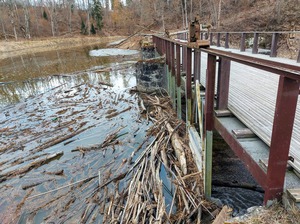
Kalnmuižas ūdensdzirnavas
Kalnmuiža, Kandavas pagasts, Tukuma novads, Latvija, LV-3120The Kalnmuiža watermill is located next to the center of Kalnmuiža on the Amula River. Until now, the time of construction of Kalnmuiža watermill was considered to be the 19th century. beginning. Unpublished documents provide an opportunity to extend this period to a much older period: 1744-1746, which provides an opportunity to consider the Kalnmuiža watermill as one of the oldest mills in Kurzeme. The mill and miller's residential house were made of stone by the mason Brown from Talsi.
After the agrarian reform, the mill was bought by the foreman Jānis Švanks, who rebuilt the mill in 1926, also improving the locks and drainage canal. Two turbines with a capacity of 36 horsepower were installed instead of the overflow water wheel. This significantly increased the mill's working capacity. An electric dynamo was installed for lighting. The mill produced flour and groats. In 1940, the mill was nationalized. In the summer of 2006, the second Latvian large - format art film "Dam" was shot in the vicinity of Kalnmuiža (director Aleksandrs Rusteikis). At the heart of the film was the love of miller Saulnārs' daughter Ieviņa and peasant boy Andrejs. Director A. Rusteikis chose the Kalnmuiža watermill from 43 mills.
Below the dam is a Devonian dolomite and clay outcrop on the 25 m high left bank of the Amula.
Information prepared by: Agris Dzenis, historian of the Kandava County Museum.



